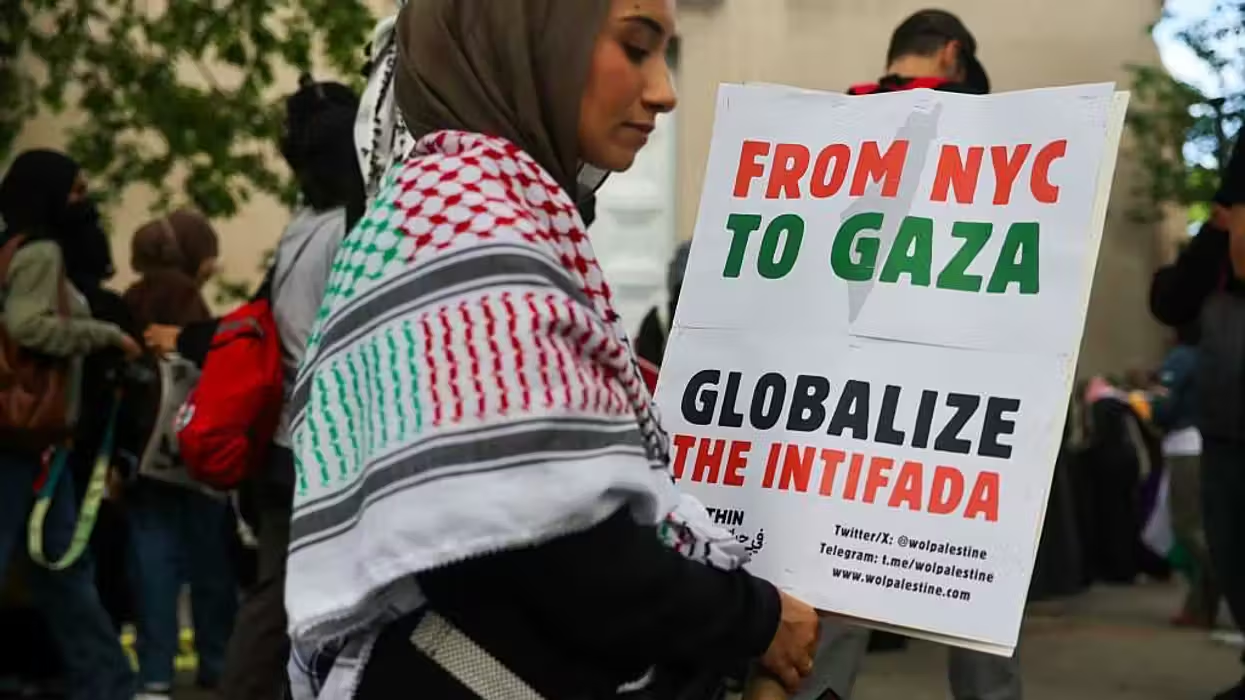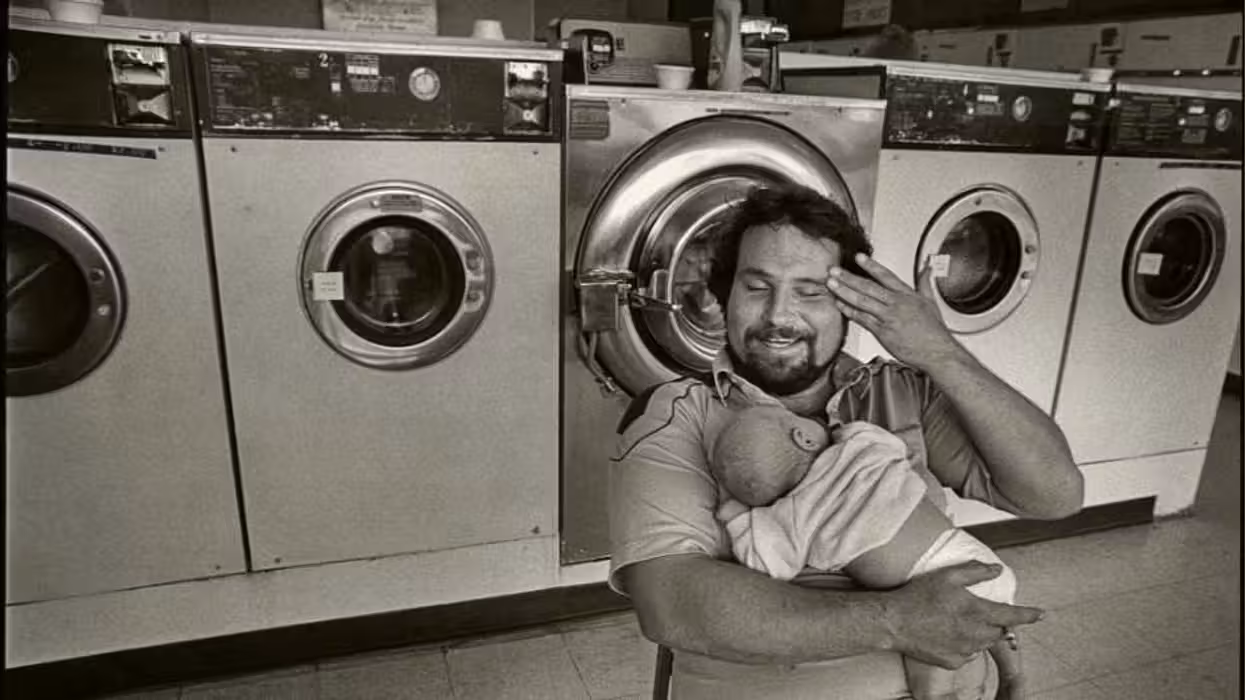
© 2025 Blaze Media LLC. All rights reserved.
Three Frightening Revelations About the Border Found in Beck's New Book 'Cowards
June 20, 2012
In Glenn Beck's new book, "Cowards," the best-selling author, nationally syndicated radio host and founder of GBTV (Soon-to-be renamed The Blaze TV) touches upon nearly every hot-button issue facing America today in a read that is both compelling and frightening at times.
One of the chapters in the book focuses solely on the U.S. border, and while it isn't exactly what one might consider "light reading" -- and may leave you wanting to curl up in a corner somewhere -- it is certainly an eye-opening account of what may really being going on along our southern border. You can get an immediate eBook of "Cowards" -- click here.
Here are three of the most unsettling revelations about the border found in "Cowards."
Mexican Drug Cartels are Here in America
Despite the fact that Department of Homeland Security Secretary Janet Napolitano says "the border is better now than it ever has been," Beck argues that drug cartels are currently operating inside the United States and regardless of what the feds say, spillover violence is dripping across our southern border. And he has the evidence to back up his claim.
"According to the Justice Department's National Drug Intelligence Center, Mexican drug cartels have a presence–either direct or by proxy, in over one-thousand U.S. cities. Ninety percent of the illegal drugs consumed in this country come from our neighbor to the south," Beck writes.
But even more disturbing than the fact that drug cartels own homes and operate front businesses in the U.S. is the reality of the brutal violence they bring with them.
DHS regularly uses cherry-picked statistics to make the case that big U.S. border cities are some of the safest in the country and therefore no spillover violence from Mexico exists. But according to Beck, these and other statistics are being purposefully manipulated to minimize the threat of cartels in the U.S., leaving a fuzzy and distorted image of their influence in America.
Here is the definition of "spillover violence" that DHS is currently using:
[S]pillover violence entails deliberate, planned attacks by the cartels on U.S. assets, including civilian, military or law enforcement officials, innocent U.S. citizens, or physical institutions such as government buildings, consulates, or business. This definition does not include trafficker on trafficker violence, whether perpetrated in Mexico or the U.S.
As Beck puts it, "In other words, if a drug cartel member beheads five rival drug cartel members in the middle of Dallas, DHS would not consider that to be 'spillover violence.'" The book also notes that Napolitano likes to use crime statistics from only big border cities such as San Diego, El Paso and Nogales, Ariz., which are some of the safest in the county.
So why exactly is Beck so worked up about the spillover violence coming from Mexico's drug cartels? He explains:
Well perhaps it's about looking past the crime stats to the cartel member who was beheaded in his Chandler, Arizona, apartment for telling his drug bosses his drug load was seized, when in fact he had sold it and kept the money. Or the six-year-old boy who was kidnapped from his Las Vegas home at gunpoint because his grandfather owed a cartel more than one million dollars. Maybe it's about the five men who were tortured and then killed by having their throats slit in northern Alabama by men working for the Gulf cartel. Or the Hidalgo County sheriff's deputy in Texas who was shot three times while responding to a cartel-related kidnapping call. Could it be the shoot-out between Gulf cartel members that happened on a McAllen, Texas highway? Or maybe it was the dismembered corpse discovered on a rural Tucson highway, and the possible link to another dismembered body found two weeks earlier in Southern California near the Hollywood sign.
And these incidents, he says, are just a "drop in the bucket."
Hezbollah in our Backyard
In a confidential memo issued in September 2010, the Tucson Police Department in Arizona reported on Hezbollah's presence in Mexico and possible ties to Mexican drug cartels operating on the U.S.-Mexico border. The only reason we know about it today is because the document was later leaked by the hacker group LulzSec.
Though the report is unable to prove an official connection, Beck explains, the author of the memo mentions two specific incidents that seem to show Hezbollah, a designated terrorist organization, is establishing a permanent presence in Mexico and slipping through our borders:
The arrest of Jameel Nasr in Tijuana, who was alleged to be tasked with establishing the Hezbollah network in Mexico and throughout South America, and the arrest of Jamal Yousef in New York City. Yousef owned a pretty decent weapons cache, including 100 M-16 assault rifles. 100 AR-15 rifles 2,500 hand grenades, C4 explosives and antitank munitions. He told police that the weapons, which were being stored n Mexico, had been stolen from Iraq with the help of his cousin, who was a member of Hezbollah.In another incident, from May 2011, a local news station in San Diego interviewed a former U.S. intelligence agent (his name and agency were never mentioned) who said, "We are looking at 15 to 20 years that Hezbollah has been setting up shop in Mexico." He also told the news station that Hezbollah is partnering with unidentified drug organizations, and that the group receives cartel cash and protection in exchange for Hezbollah expertise, "from money laundering to firearms training and explosives training."
As if that isn't alarming enough, Beck goes on to say that thousands of people affiliated with Hezbollah are living in the United States, some of them for quite a while.
He points to a 2008 raid on a Queens, New York warehouse where police confiscated $4.5 million worth of fake merchandise in the largest raid of its kind in U.S. history. New York investigators later revealed that the proceeds from the knock-offs were likely headed to Middle Eastern terrorist organizations.
However, if there is any silver lining in this scenario, Beck says it's this: "there is no evidence than an operational member of a terrorist group–meaning someone toting a bomb, or actively planning to kill lots of Americans–has gotten into the United States via Mexico, yet."
Feel better?
When it Comes to Drug Smuggling, Cartels Are Innovators
According to Beck, drug cartels specialize in four drugs: marijuana, cocaine, heroin and methamphetamine. The United Nations estimates the cartels make as much as $30 billion each year from drug sales.
As mentioned earlier, the U.S. gets 90 percent of its drug supply from Mexico, which would make us sort of a preferred customer of the cartels. And while a lot of the drugs come across the border hidden in secret trunk compartments or carried by "drug mules," cartels have had to get creative in order to keep up with the demand. And right now, their business is booming.
The use of border tunnels, drug submarines and ultralight planes is becoming increasingly more common for drug traffickers who want to minimize the risk of being caught and get their drugs into the U.S.
Beck provides more details in his book:
More than one hundred cross-border tunnels have been discovered in the past decade, including seven major tunnels along the San Diego border with Mexico in the past five years alone, according to U.S. Immigration Customs Enforcement (ICE). Some of these tunnels are engineering wonders, with concrete-reinforced walls, ventilation systems, wired-in lighting, and track systems for transporting drugs quickly. Other tunnels are more like rabbit holes.
Drug subs can can be "multibillion dollar affairs" built by brilliant Russian engineers or just a cheaply built contraption that can barely make the trip, however, no matter what the price tag the subs can carry a lot of drugs.
Ultralights can carry about 250 pounds of drugs and one person. They can be hard to detect by radar because they fly just below it.
Some other methods have included stuffing a frozen shark with packages of cocaine and creating actual statues of Jesus made out of a plaster-cocaine mixture.
As Beck points out, "There is nothing quite like drugs and money to bring out maximum creativity in criminals."
Get your copy of "Cowards" here.
Want to leave a tip?
We answer to you. Help keep our content free of advertisers and big tech censorship by leaving a tip today.
Want to join the conversation?
Already a subscriber?
more stories
Sign up for the Blaze newsletter
By signing up, you agree to our Privacy Policy and Terms of Use, and agree to receive content that may sometimes include advertisements. You may opt out at any time.
Related Content
© 2025 Blaze Media LLC. All rights reserved.
Get the stories that matter most delivered directly to your inbox.
By signing up, you agree to our Privacy Policy and Terms of Use, and agree to receive content that may sometimes include advertisements. You may opt out at any time.







